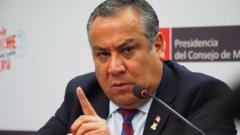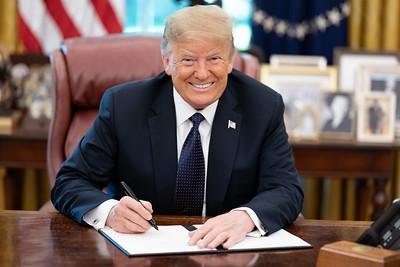In a dramatic turn of events, Peru's Prime Minister Gustavo Adrianzén has tendered his resignation just hours before confronting a no-confidence vote in Congress. This decision follows the harrowing incident where 13 mine workers were kidnapped and killed, which has deeply unsettled the nation and amplified calls for accountability.
Adrianzén's exit marks a significant setback for President Dina Boluarte, who has witnessed a steep decline in approval ratings amid escalating crime rates and public outrage. This resignation, the third prime ministerial departure under Boluarte's leadership, necessitates a complete overhaul of her cabinet, further complicating an already unstable political environment.
Peru's constitution mandates that all ministers resign alongside the prime minister. While Boluarte retains the option to reappoint former ministers, this can only occur once a new prime minister is installed. The fallout from Adrianzén's resignation coincides with a cabinet reshuffle only days prior, wherein three newly appointed ministers—finance, interior, and transport—must now also relinquish their positions, underscoring the latency of chaos within the government.
Public sentiment has understandably soured, with many Peruvians expressing frustration over Boluarte's inability to effectively address rising crime. Amidst this growing discontent, protests have surged, with citizens demanding immediate action against extortion and targeted violence. Demonstrators, clad in white to symbolize peace, have rallied in the streets, advocating for strategic measures to safeguard lives and restore security.
As Peru stands at a critical crossroads, the political ramifications of Adrianzén’s resignation could reverberate throughout the country, as it searches for effective leadership amidst turbulence and dissatisfaction.
Adrianzén's exit marks a significant setback for President Dina Boluarte, who has witnessed a steep decline in approval ratings amid escalating crime rates and public outrage. This resignation, the third prime ministerial departure under Boluarte's leadership, necessitates a complete overhaul of her cabinet, further complicating an already unstable political environment.
Peru's constitution mandates that all ministers resign alongside the prime minister. While Boluarte retains the option to reappoint former ministers, this can only occur once a new prime minister is installed. The fallout from Adrianzén's resignation coincides with a cabinet reshuffle only days prior, wherein three newly appointed ministers—finance, interior, and transport—must now also relinquish their positions, underscoring the latency of chaos within the government.
Public sentiment has understandably soured, with many Peruvians expressing frustration over Boluarte's inability to effectively address rising crime. Amidst this growing discontent, protests have surged, with citizens demanding immediate action against extortion and targeted violence. Demonstrators, clad in white to symbolize peace, have rallied in the streets, advocating for strategic measures to safeguard lives and restore security.
As Peru stands at a critical crossroads, the political ramifications of Adrianzén’s resignation could reverberate throughout the country, as it searches for effective leadership amidst turbulence and dissatisfaction.


















